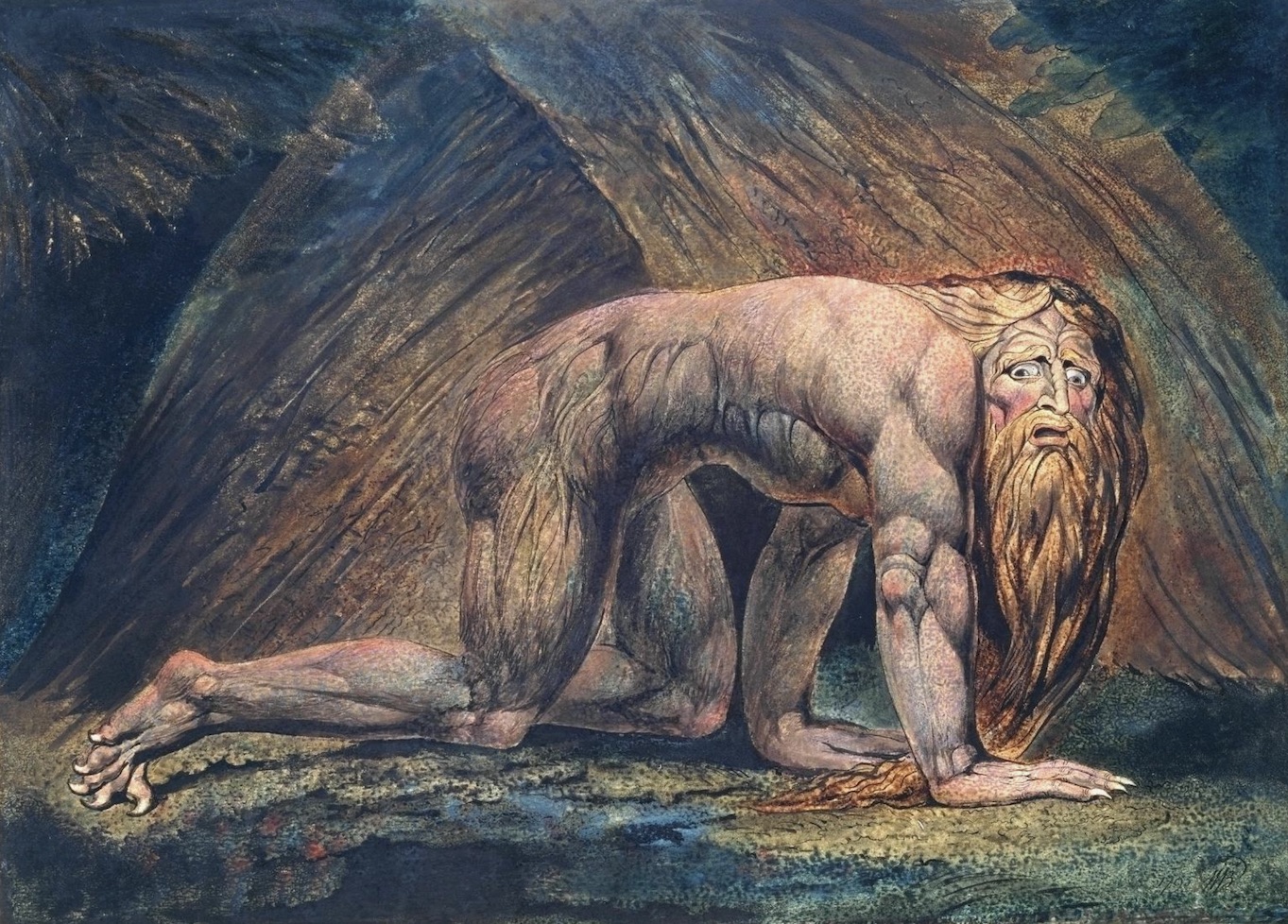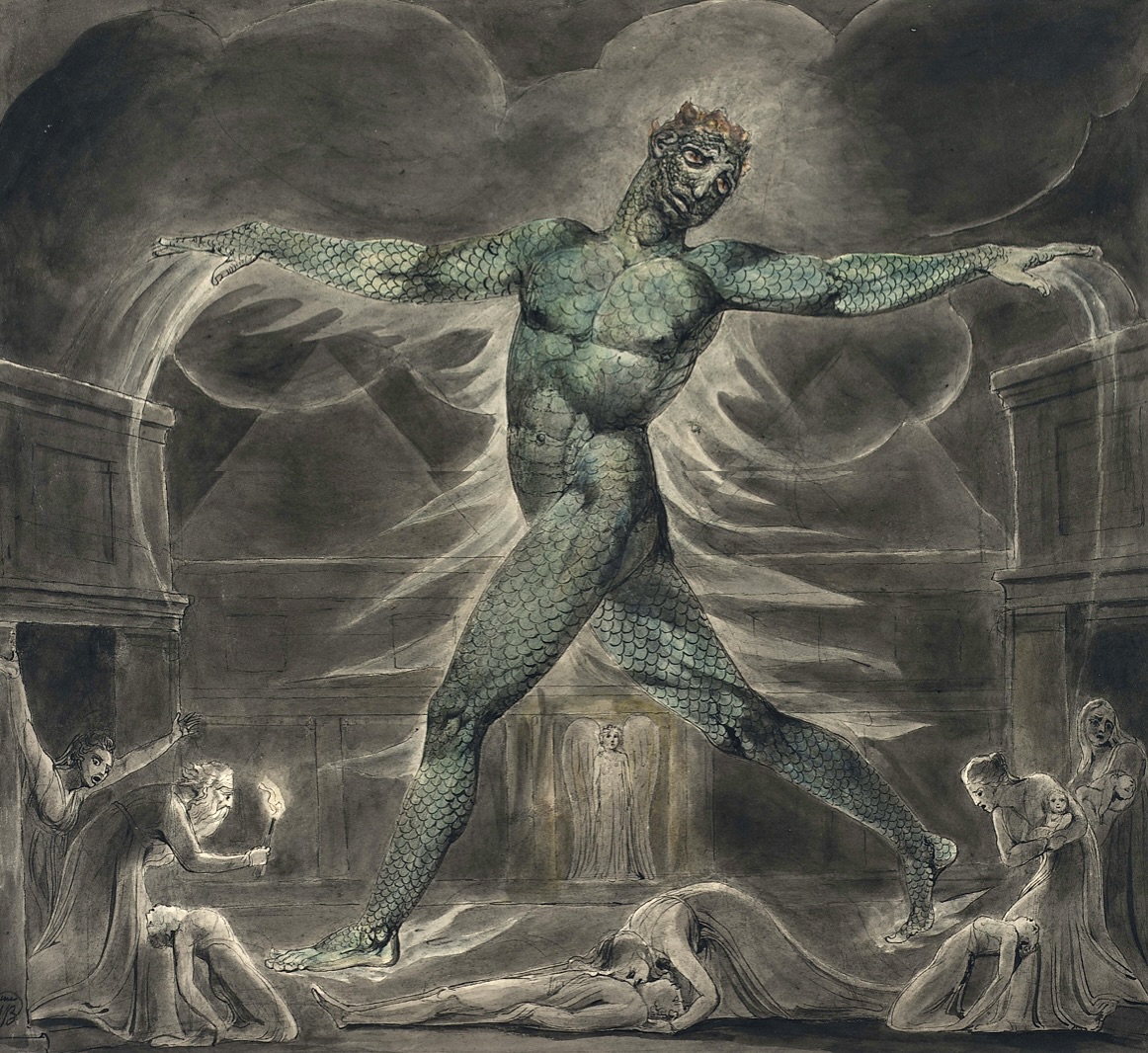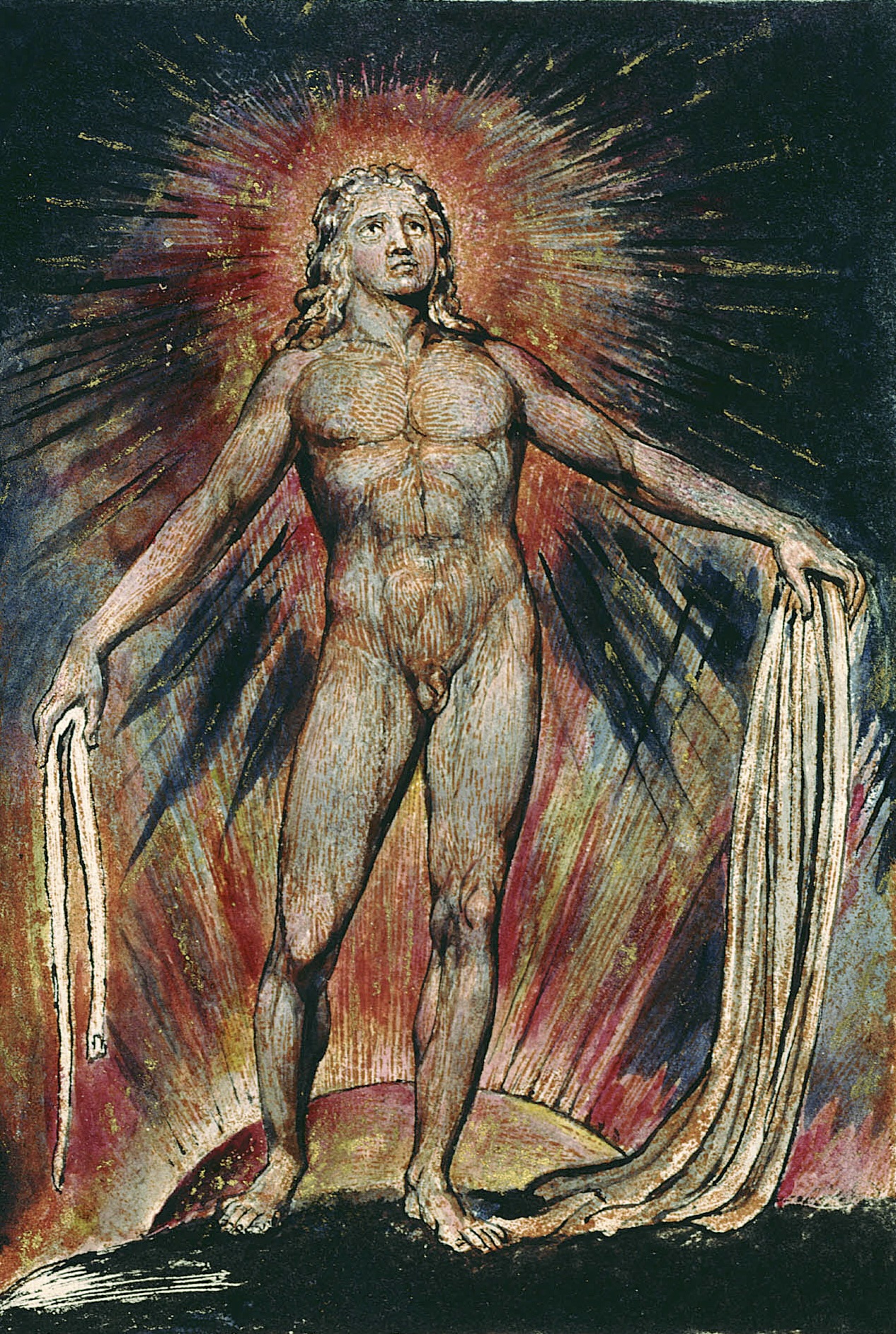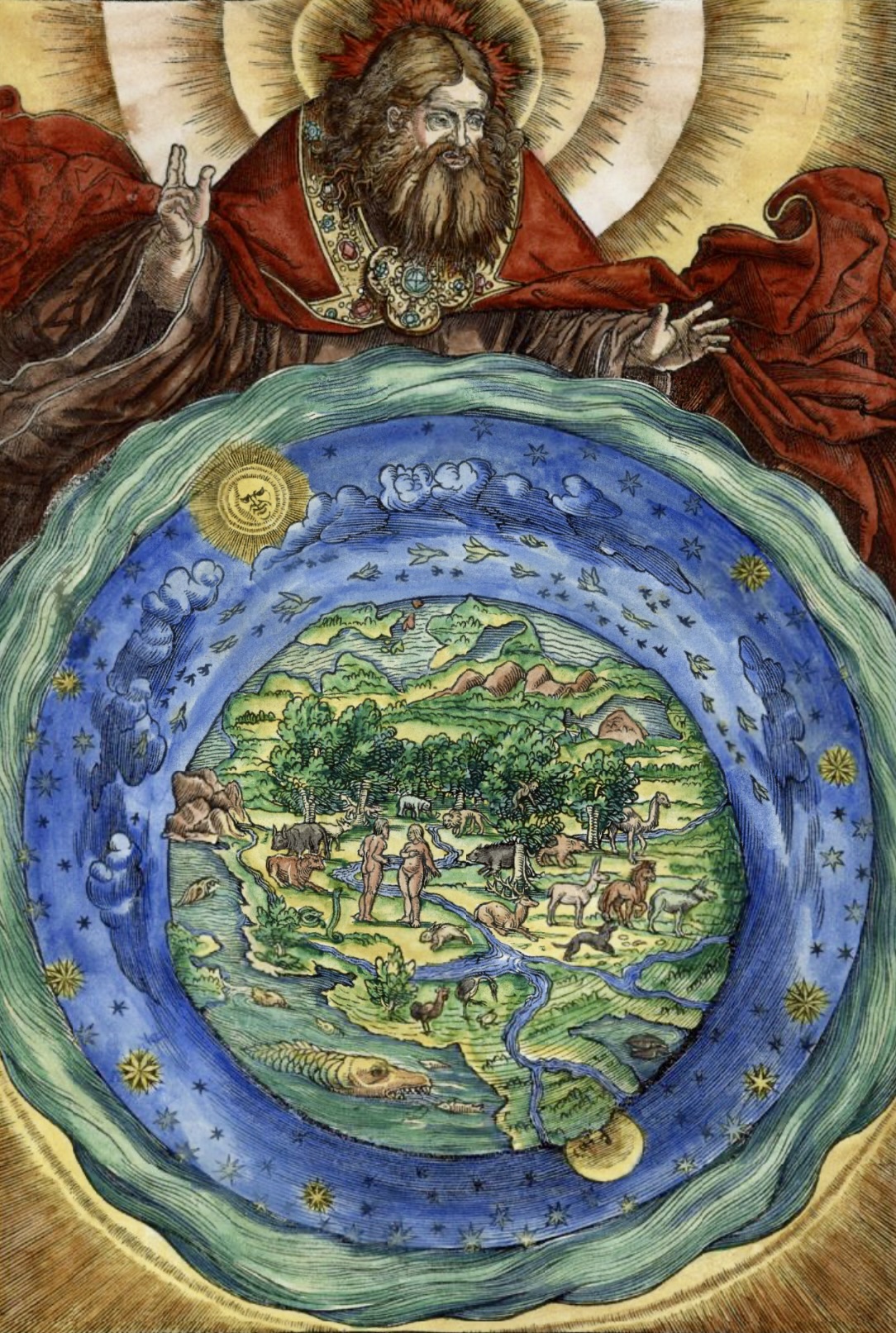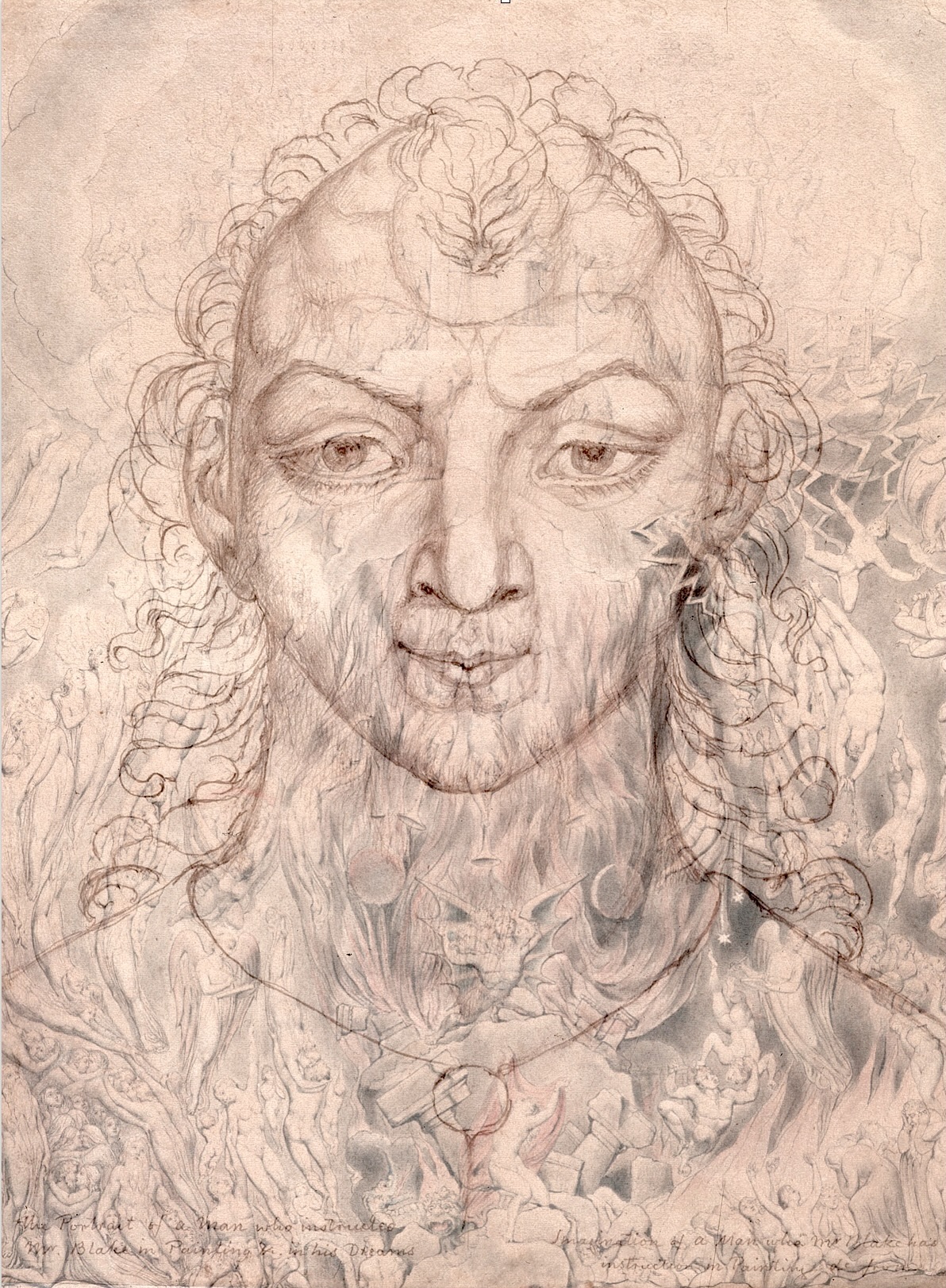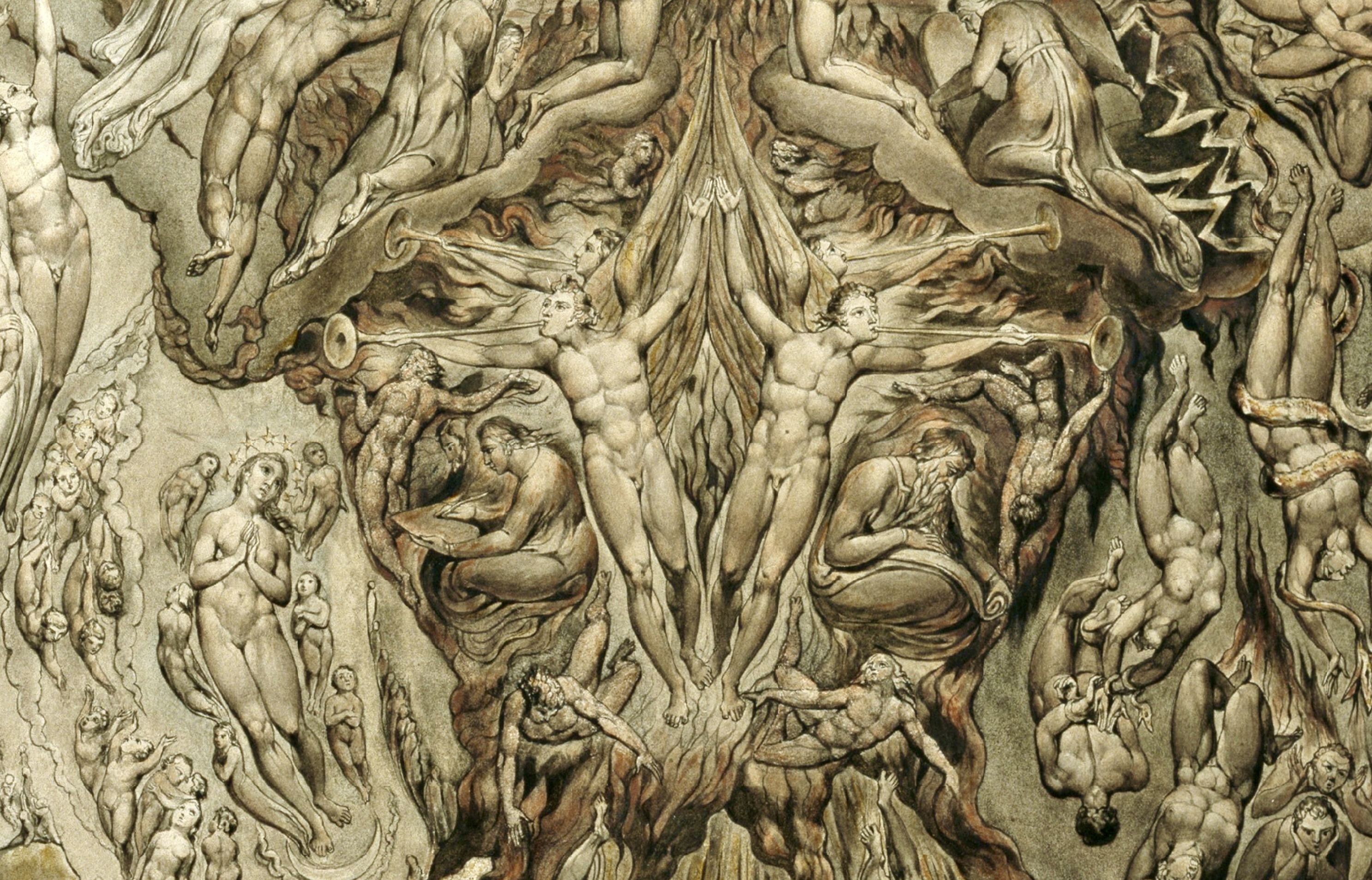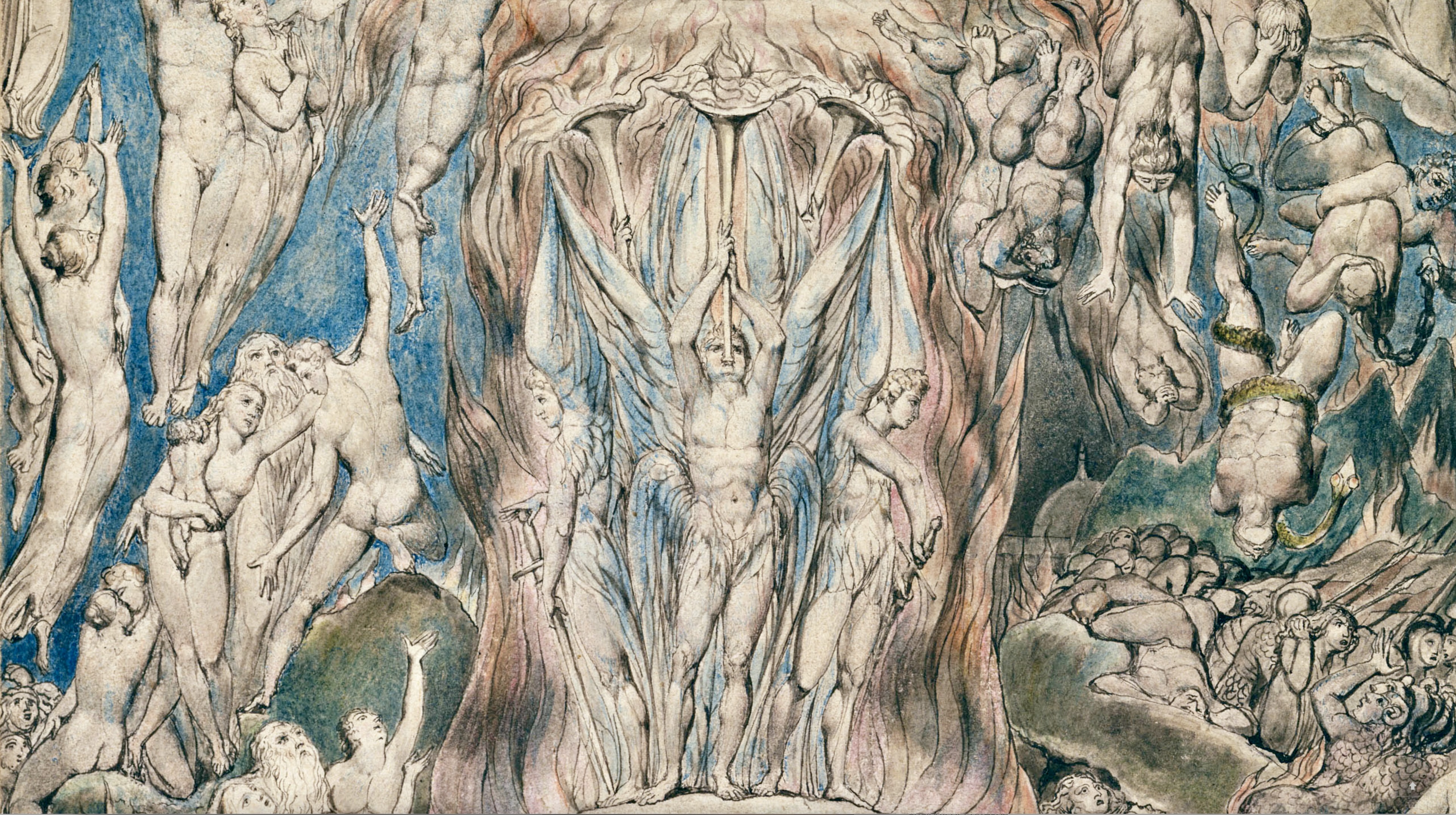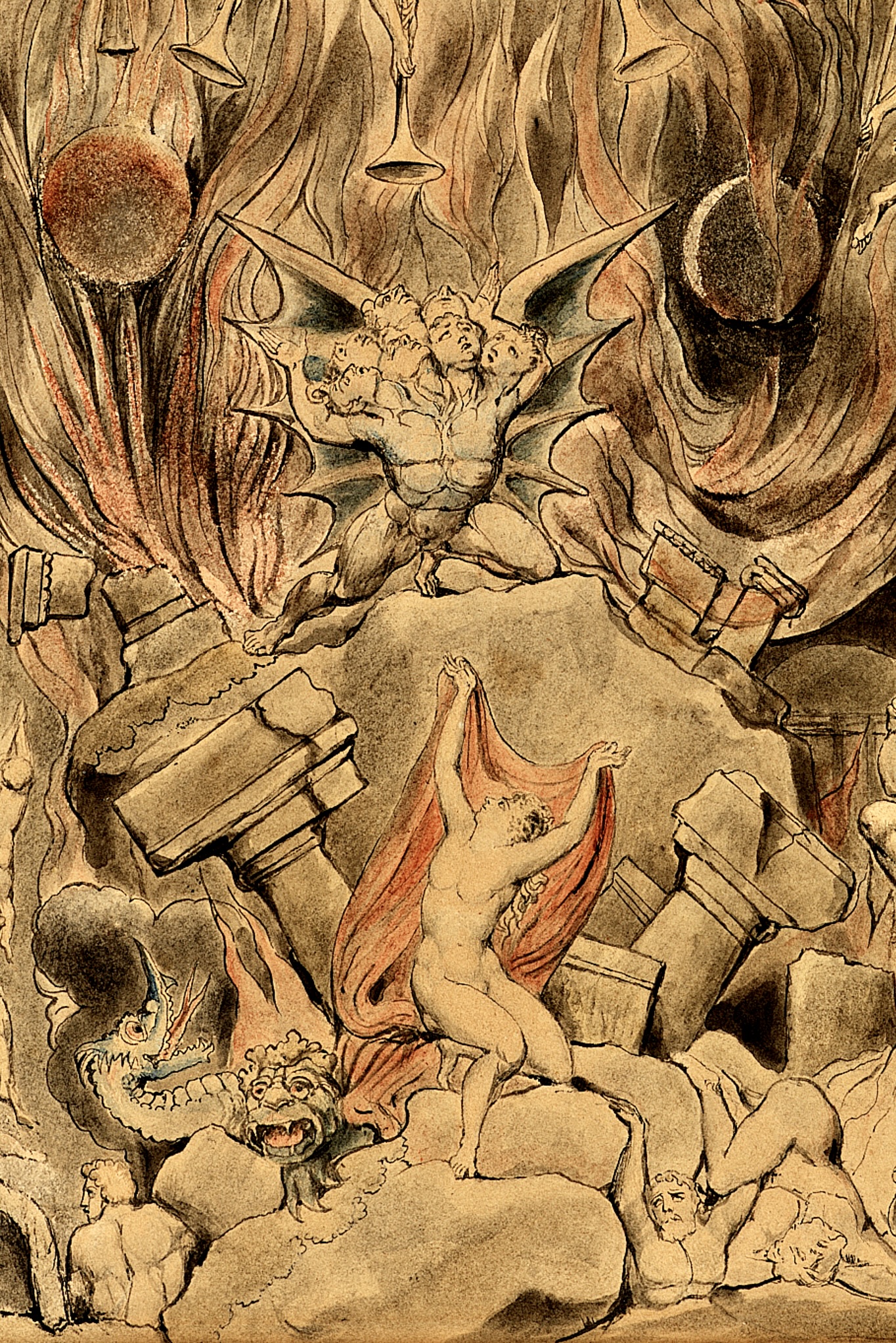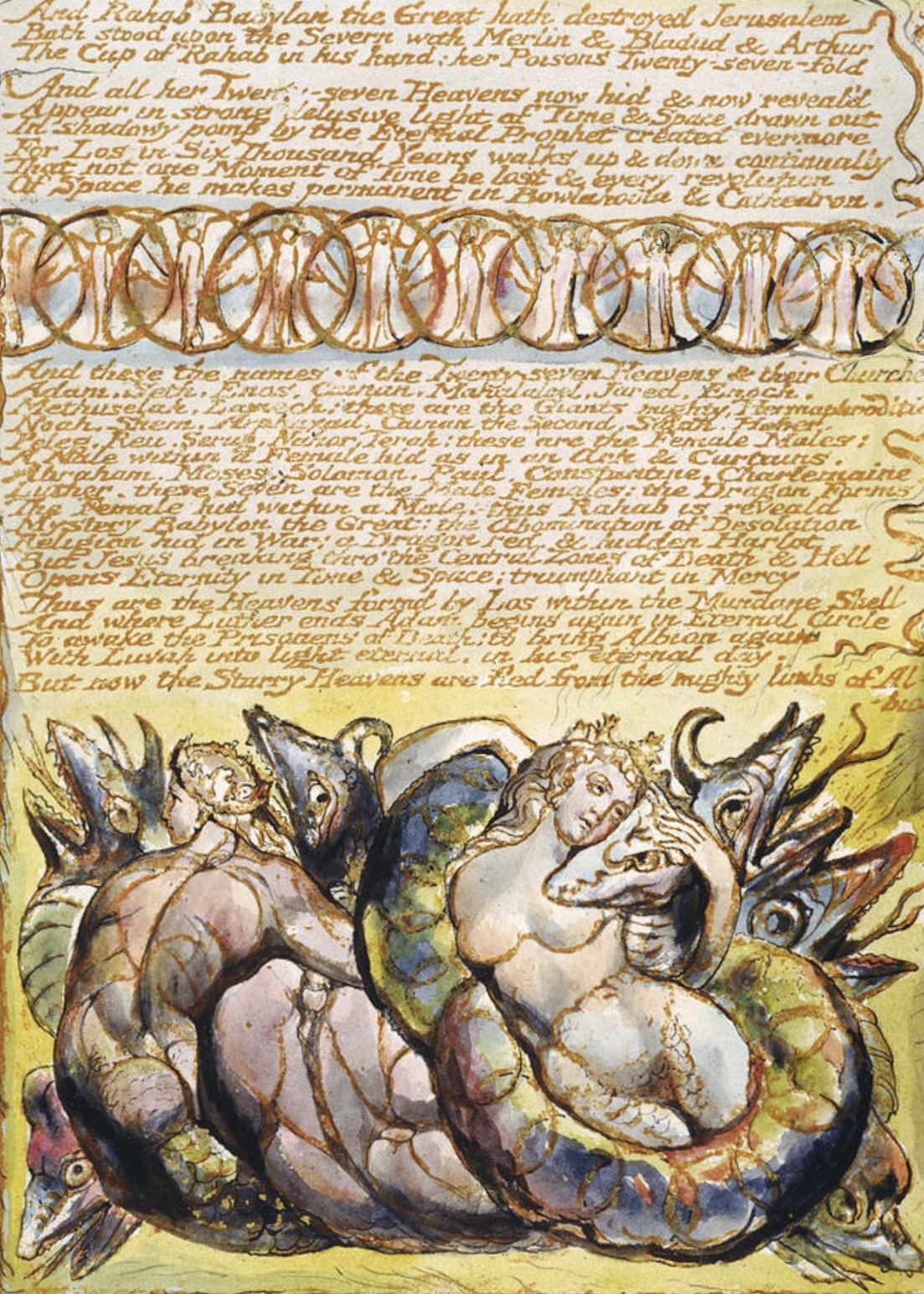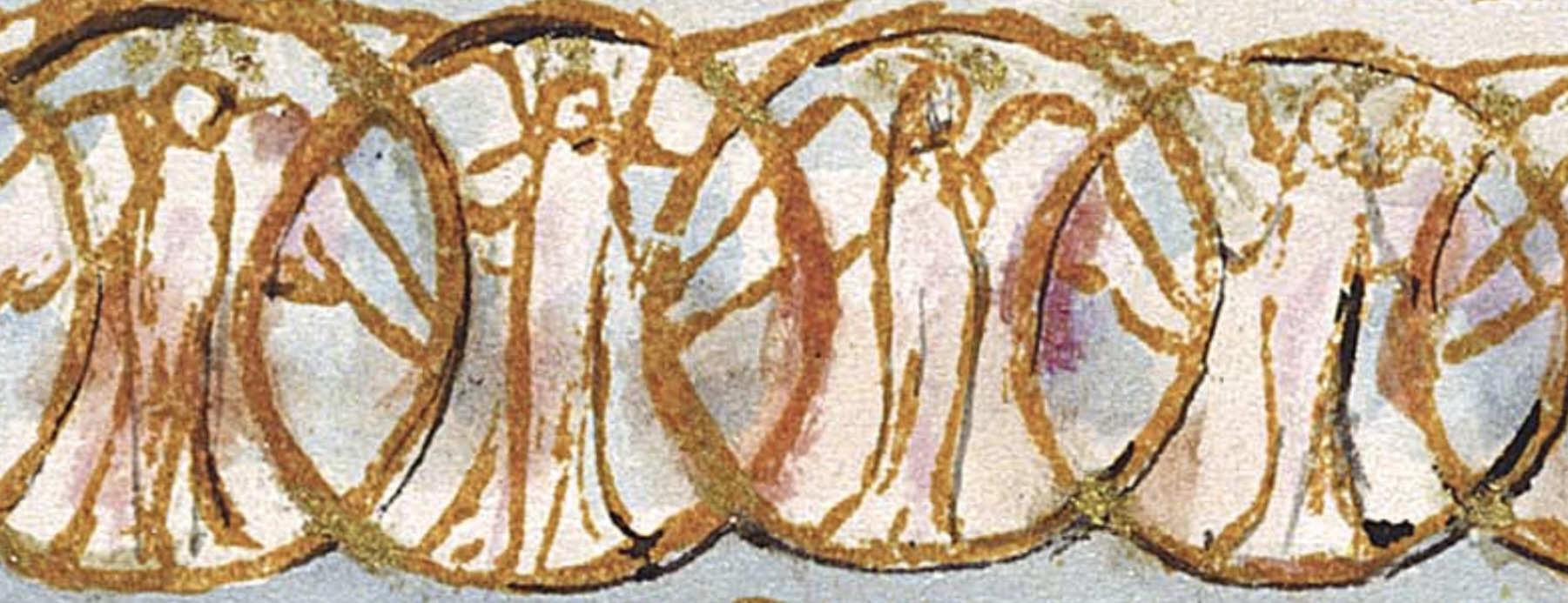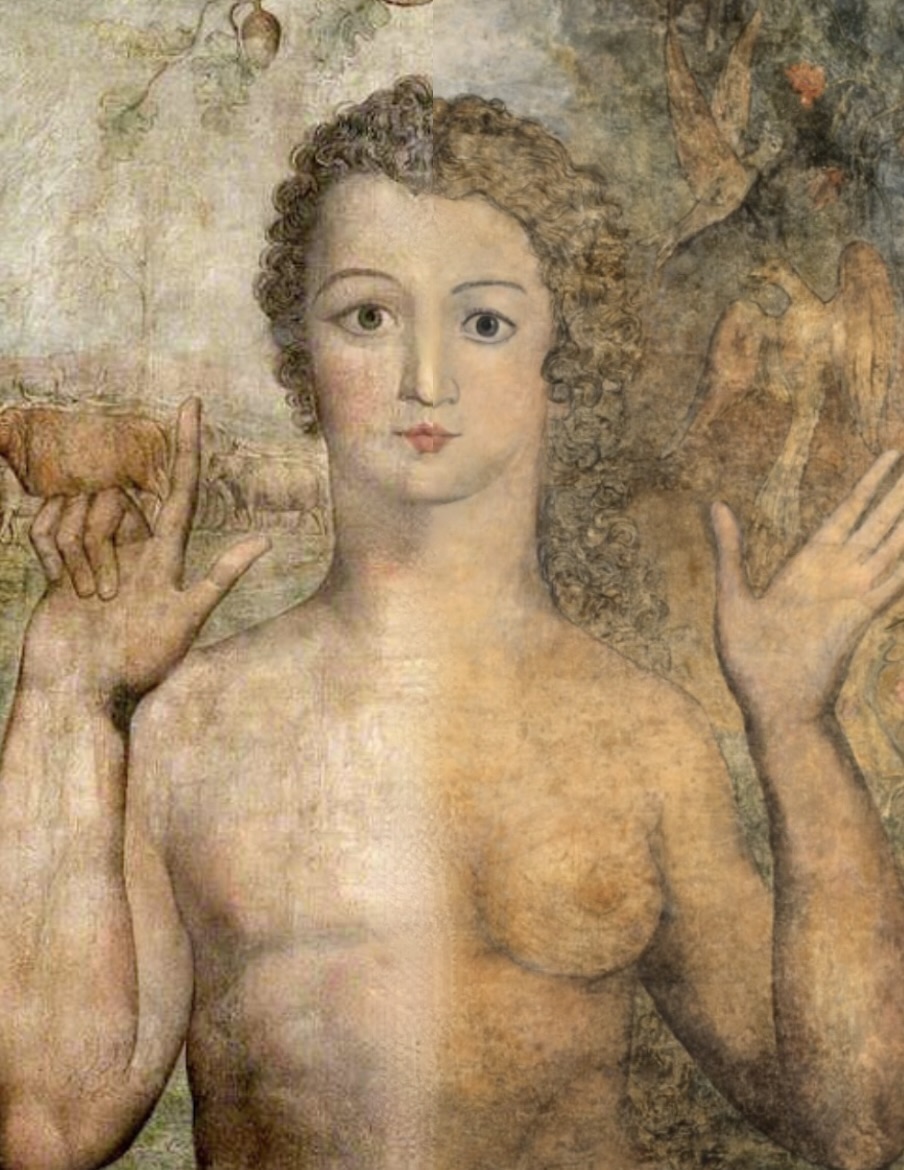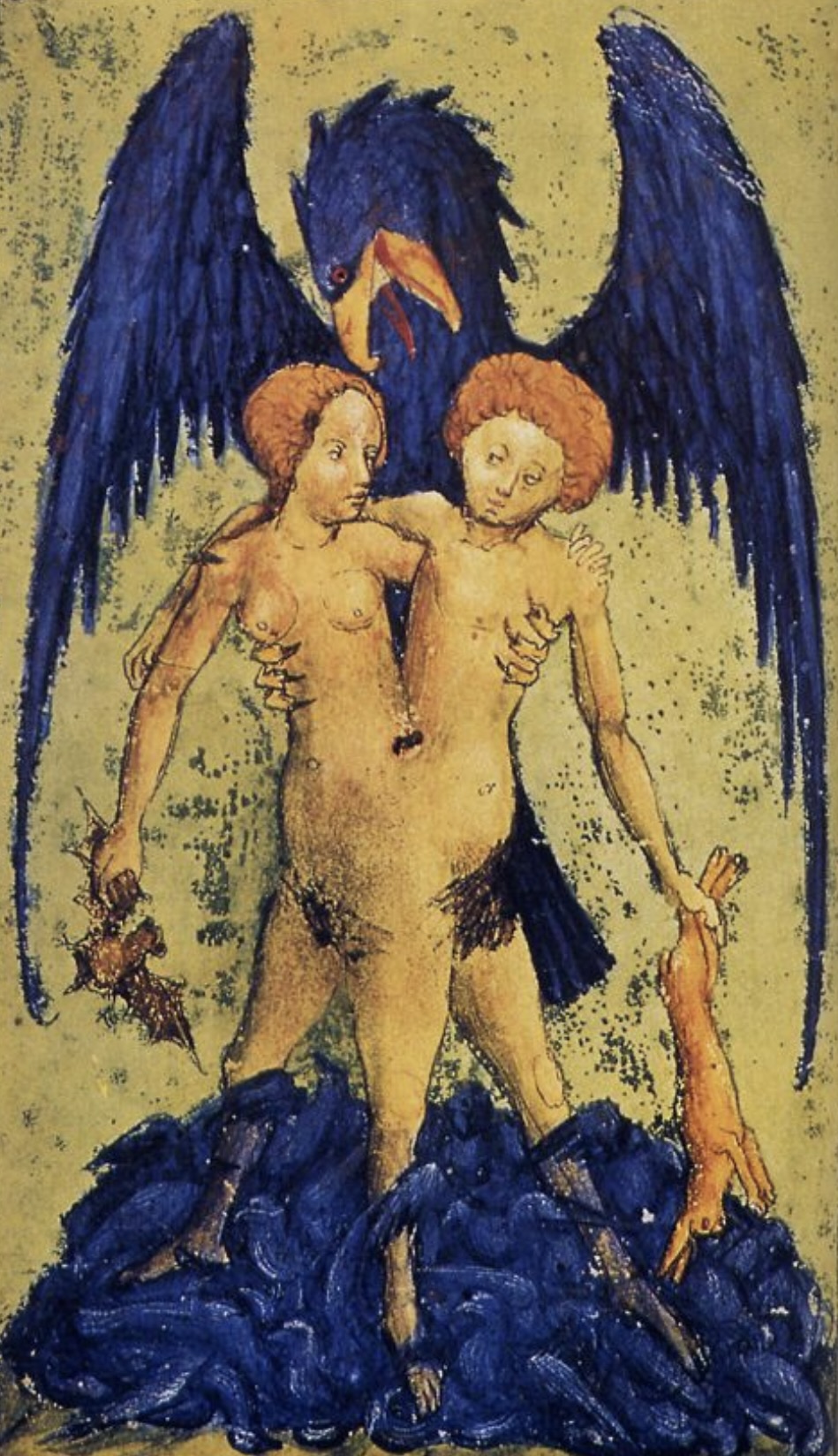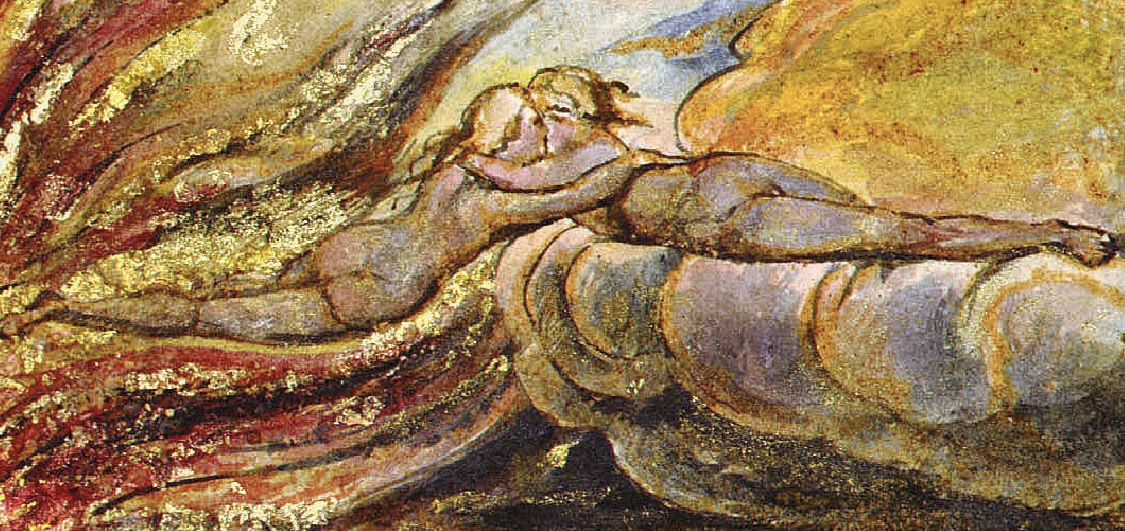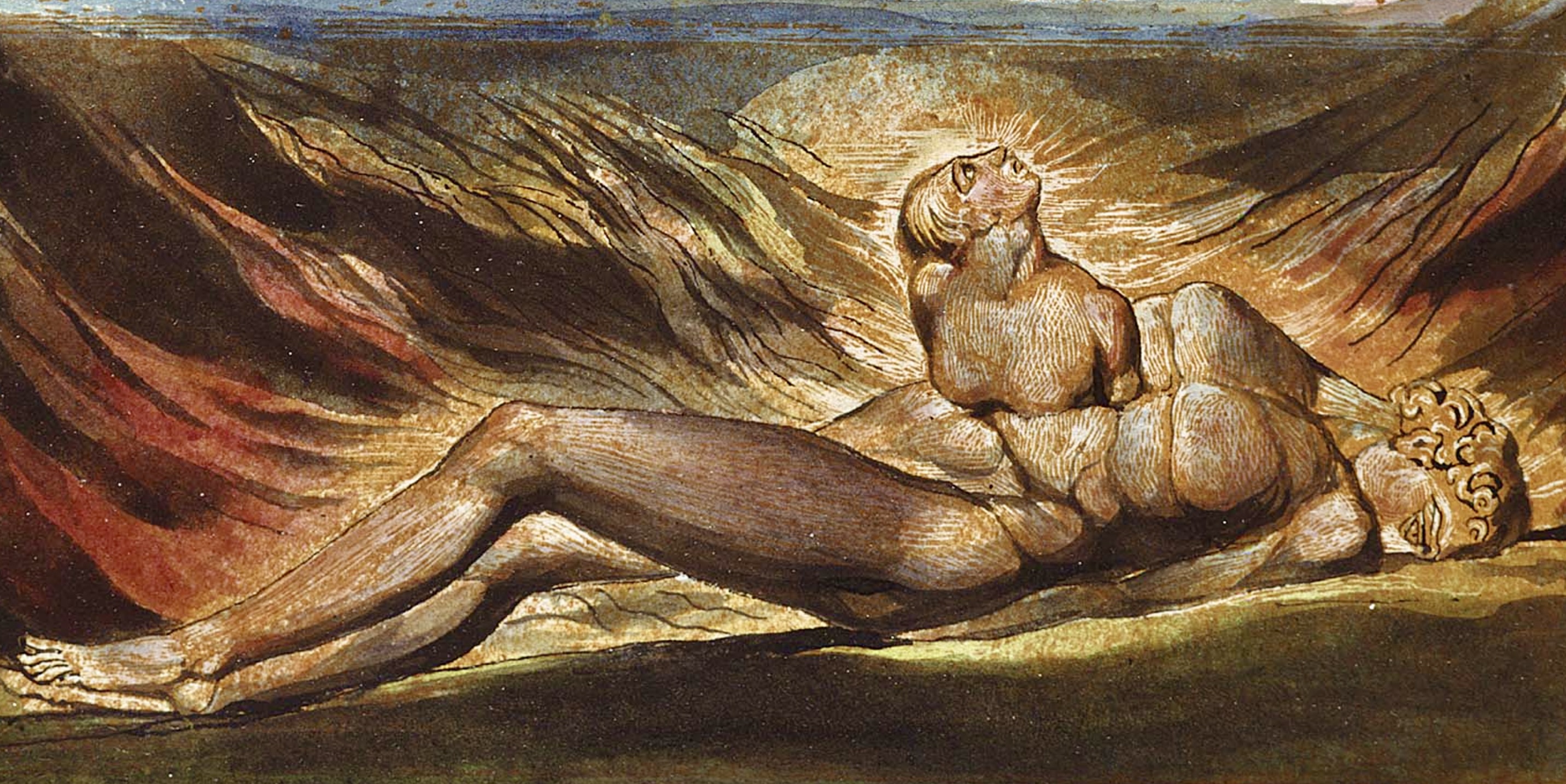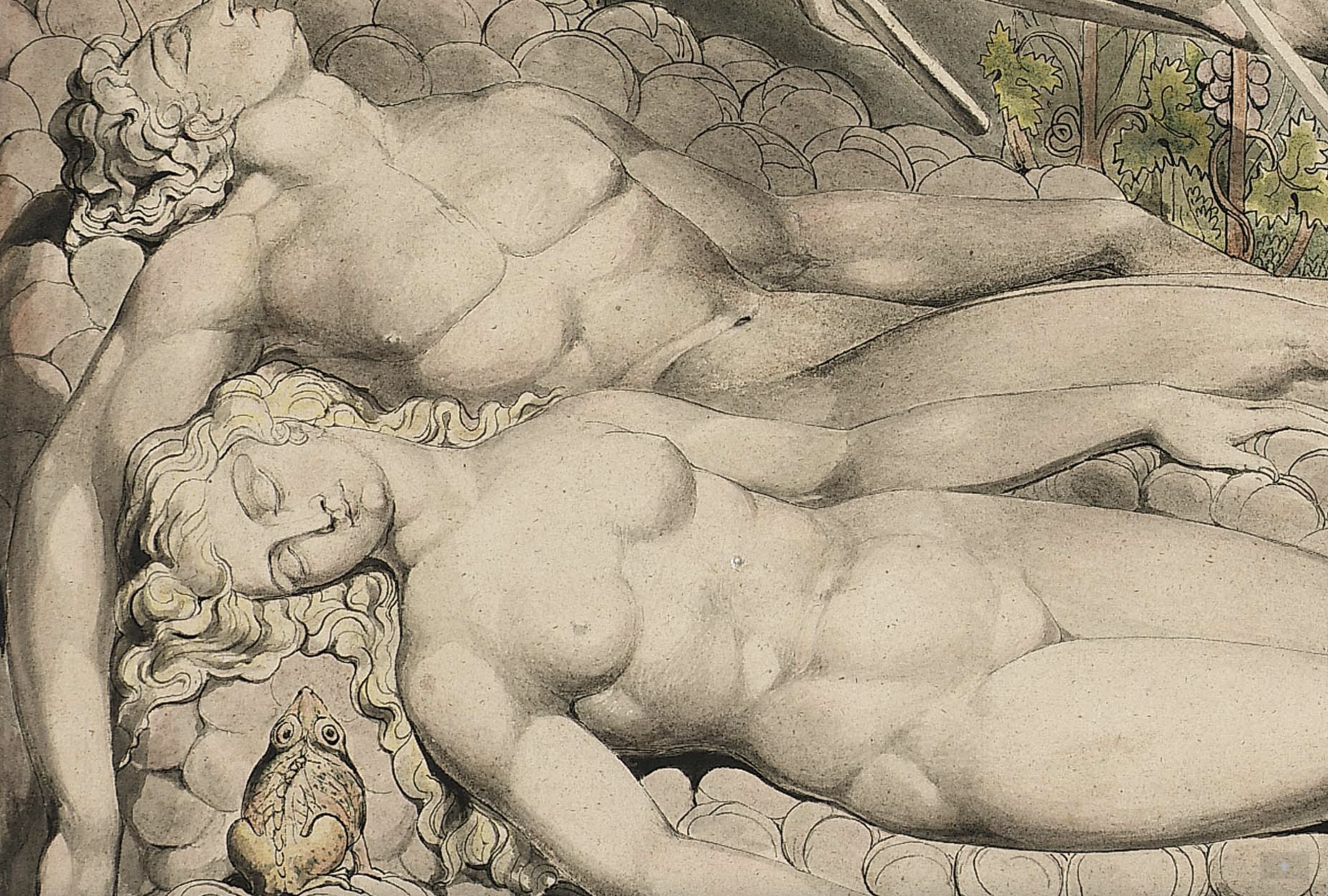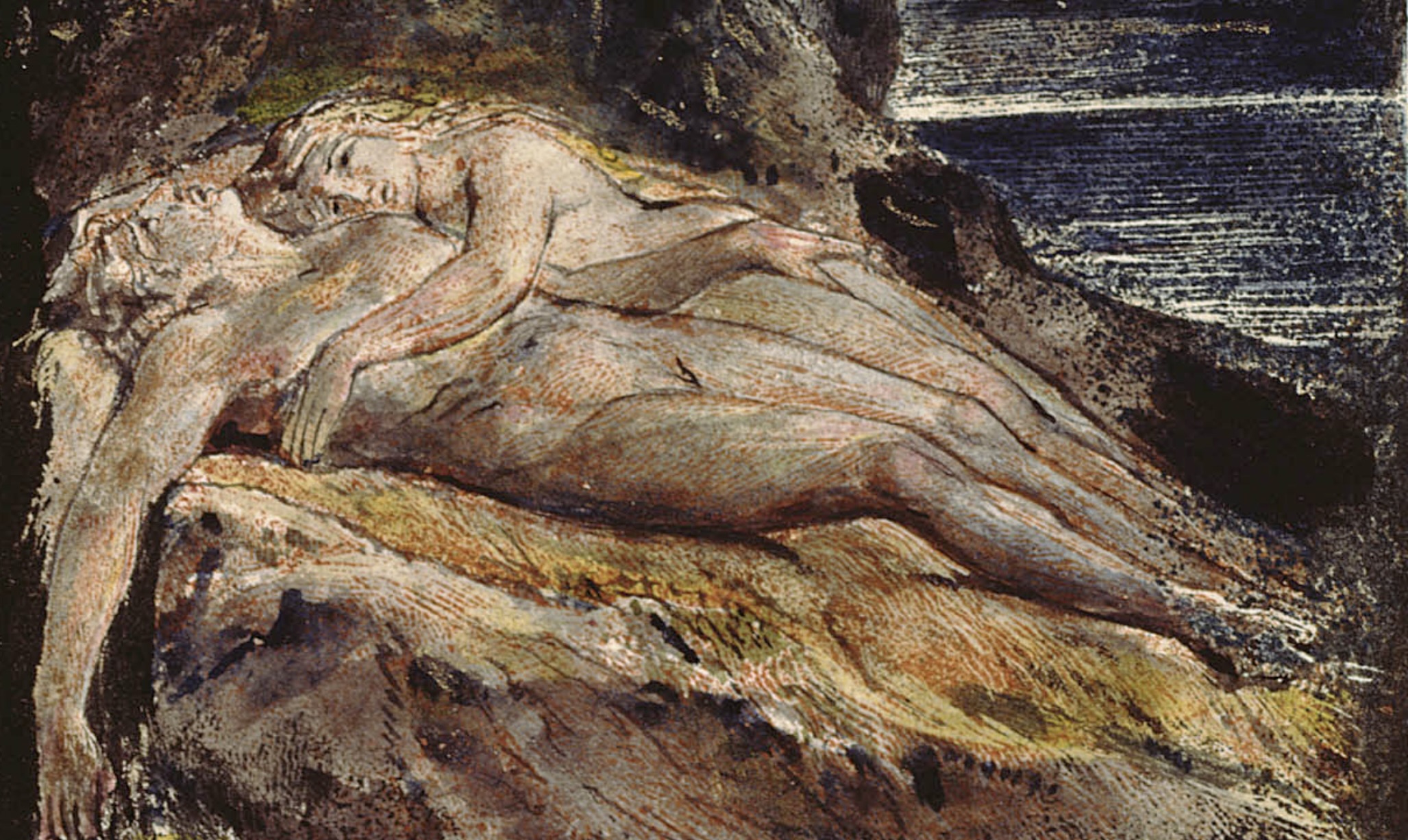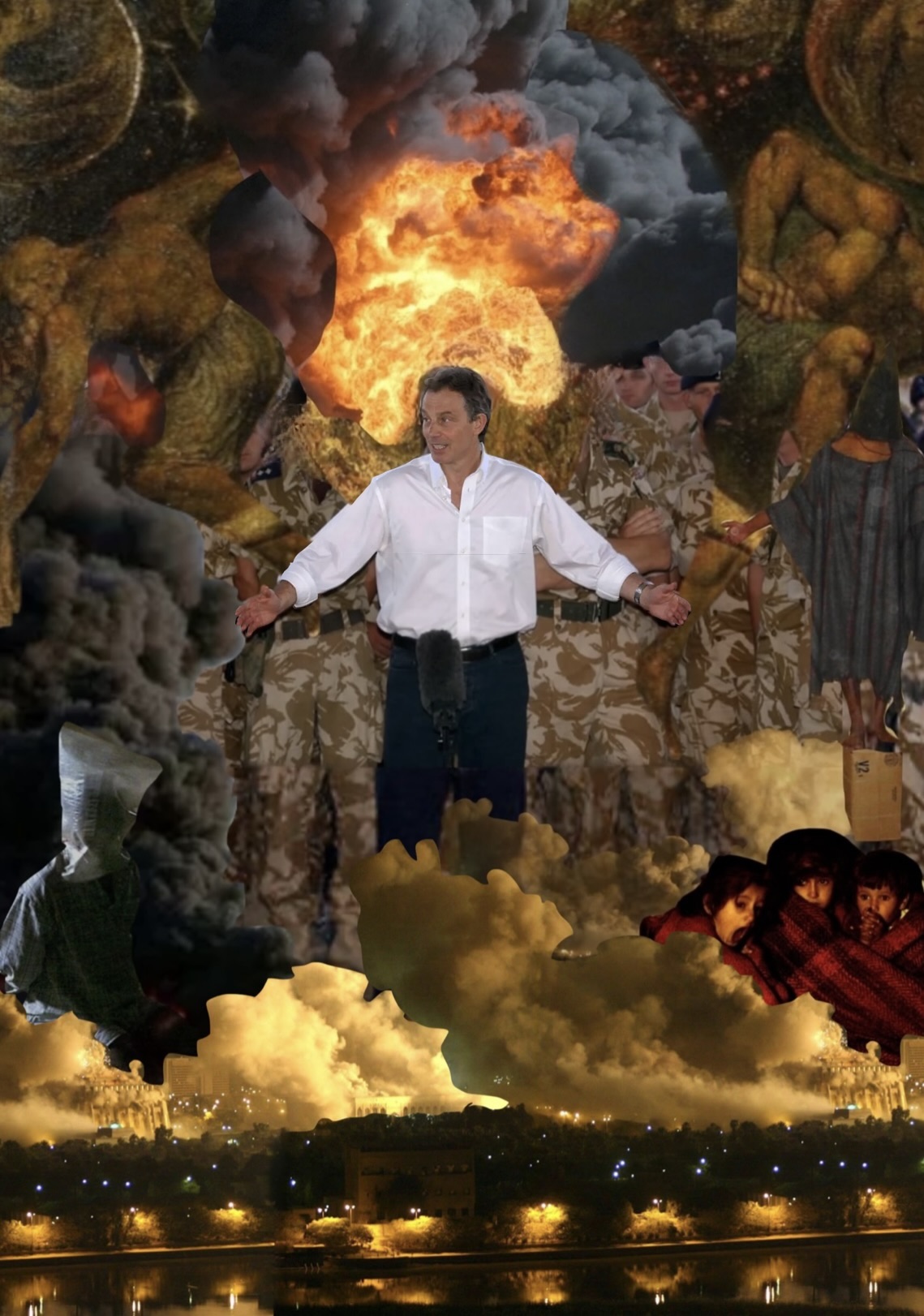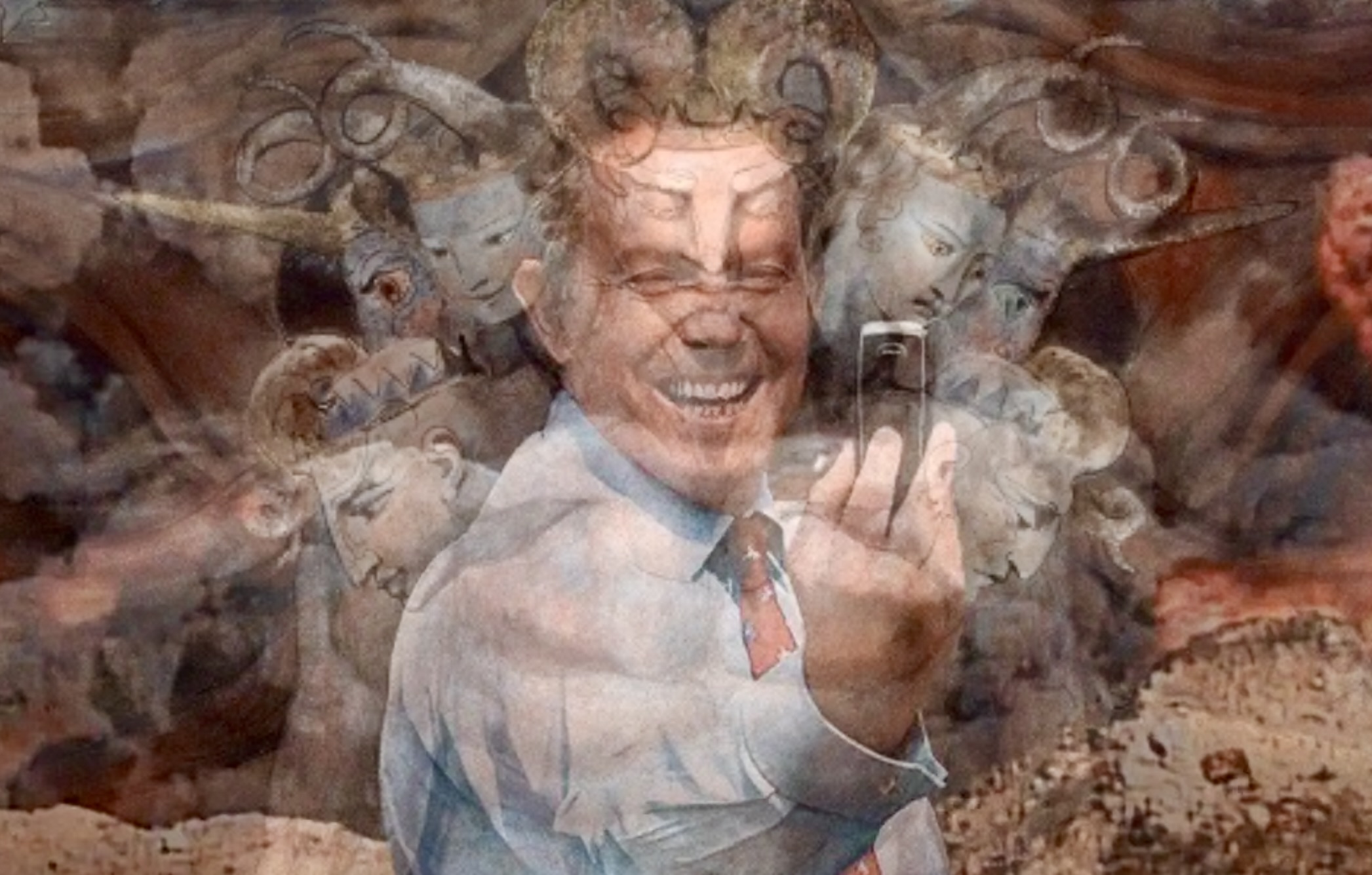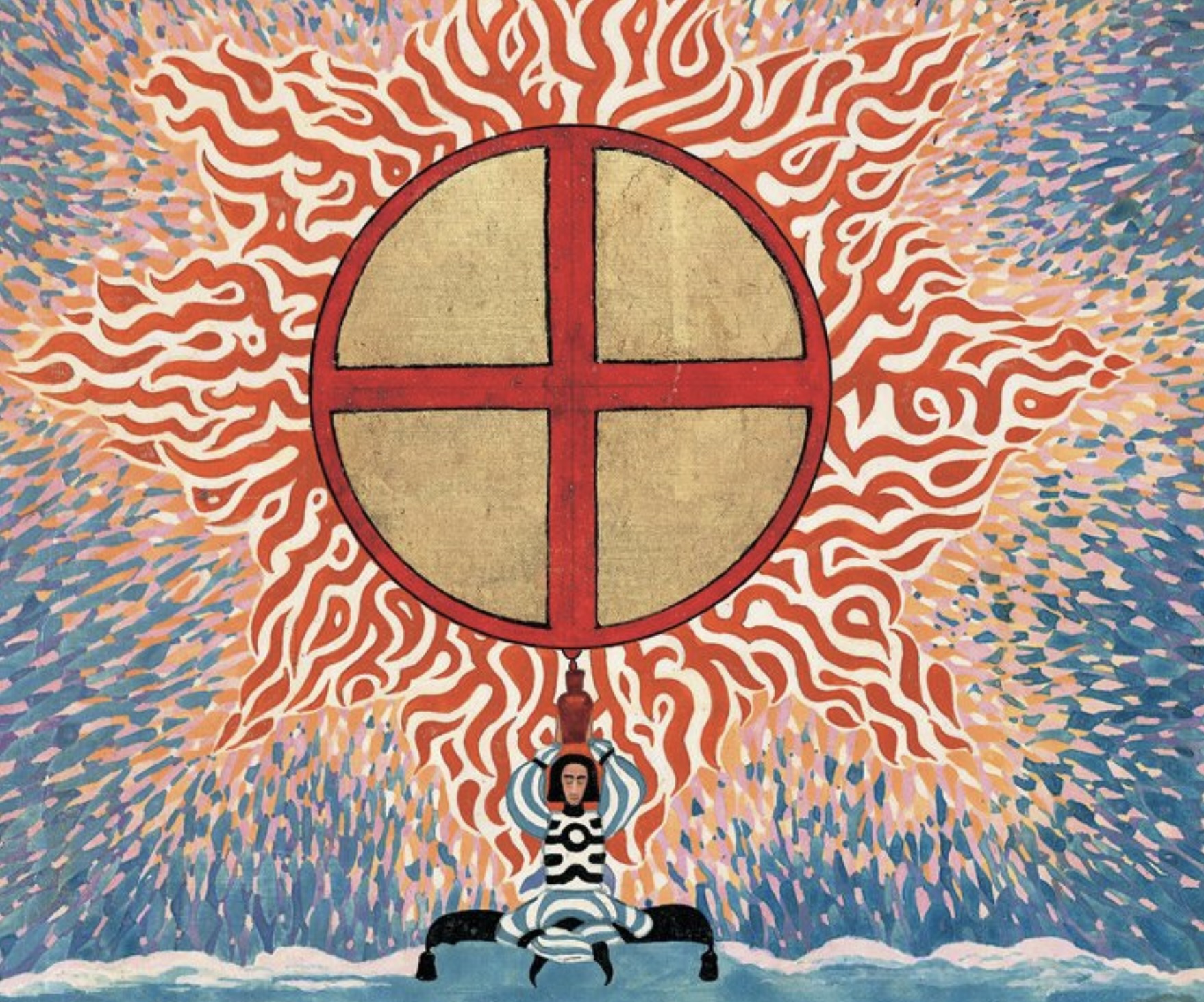The ancient tradition that the world will be consumed in fire at the end of six thousand years is true. as I have heard from Hell.
For the cherub with his flaming sword is hereby commanded to leave his guard at the tree of life, and when he does, the whole creation will be consumed, and appear infinite and holy whereas it now appears finite & corrupt.
This will come to pass by an improvement of sensual enjoyment.
– Blake, The Marriage of Heaven and Hell
In order to see reality as “infinite and holy” Blake’s advice is to let go, to “surrender”: to cast one’s rationalising, judgmental ego or “Selfhood” into the “Lakes of Los”, and to let go of the entire egoic program. We can have no real relationship or communion with reality while we are judging it: to judge something is to stand outside it, and to convert living contraries into dead and conflicting ideas or opposites (“good and bad”, “light and dark” etc).
The Hebrew word for “judges” is “Elohim“: it’s the name given to the “God” of the Book of Genesis which presides over our expulsion from Eden, that is from the present moment – from Being. This is what Judgment does to the human form and the human brain: this is what the Judgment program looks like:
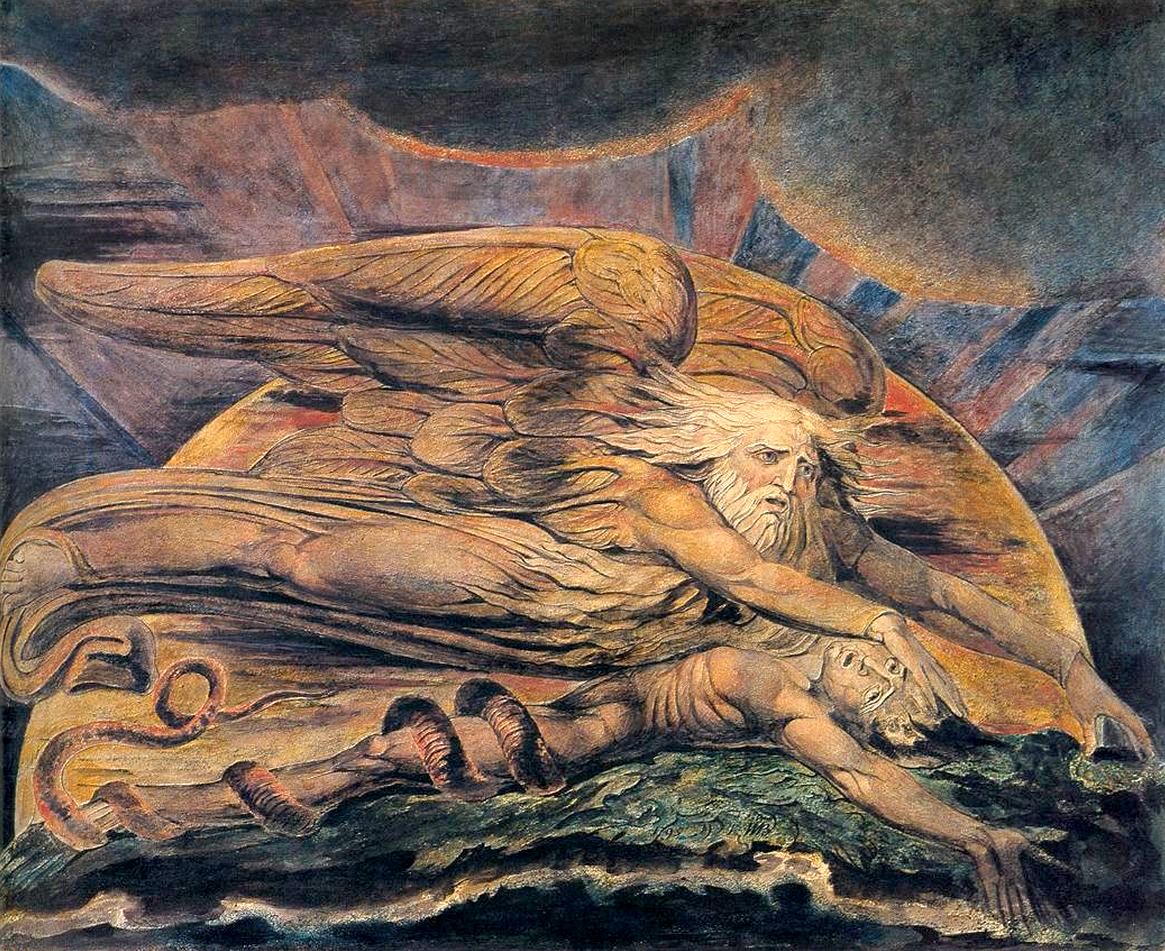
Elohim Creating Adam, by Blake (c. 1795-1805). The Biblical name for the “judge” or “judges” within the psyche of man is “Elohim”, and as such they appear in the Book of Genesis. “And God [Elohim] said, Let us [plural] make man in our image, after our likeness” (Genesis 1:26). It is no coincidence that this moment of “creation” (or rather “division”) is shortly followed by the eating of the tree of “good and evil”, and the even swifter expulsion from “Paradise” (i.e., from integrated Being) as a result. As Blake suggests in the detailed notes he made for his Vision of the Last Judgment (1810), every time a judgment is made about reality, the same “Satanic” process or judgment program (within “Adam”) gets activated.
In many ways, Blake’s whole poetic output has been leading up to this moment: the moment in his work where the individual finally realises the nature of his own psyche, and becomes aware of the pathological nature of the egoic Selfhood that had previously controlled and conditioned him.
In Jerusalem: The Emanation of the Giant Albion (1820), Blake himself directly addresses the human imagination as that agency within man which can give “Error” a form (so that it can be ‘seen’, so that it can be known and rejected), and which also operates above and beyond normal (egoic or rational) consciousness, in order to “Annihilate the Selfhood in me” (J 5:22). With the profoundly unconscious rational Selfhood no longer “God” of the human perceptual and cognitive system, of the left hemisphere of the brain, the individual can finally “awake from Slumbers of Six Thousand Years”.
Note in the picture above that the Elohim’s right hand (i.e., left hemisphere) is directly targeting Adam’s right hemisphere, as if to take control of it, to demobilise and suppress it. The right brain is non-judgmental and relational; it contains the networks and processes of empathy, inter-connectedness, “I/Thou’ relationships, intuition, betweenness, and being itself (through its intimate and extensive connection to the human body, and to embodiment). This act effectively makes the deeper intelligence and awareness of the right brain “unconscious” or as Blake says, “asleep”.
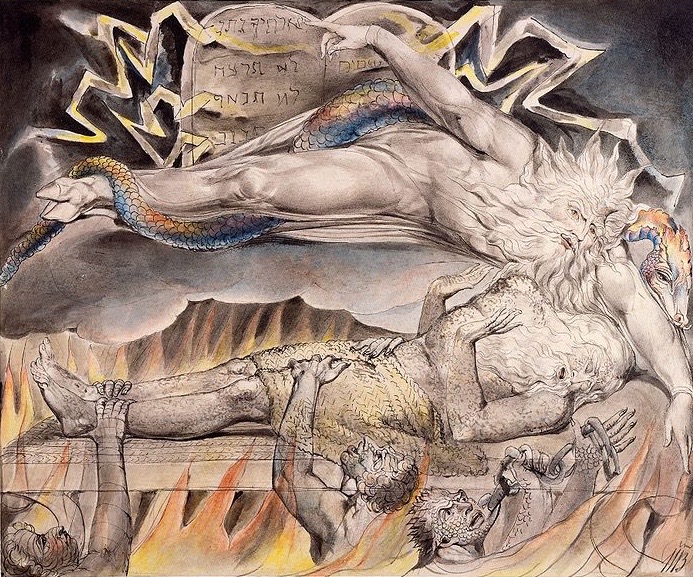
The cloven hooves of the Elohim Program: the Dividing, Judging Power within the Brain. Image: ‘Job’s Evil Dreams’ from Blake’s Illustrations of the Book of Job. Note the irony, and inversion, of the title: Job’s “Evil” dream is of a “Good” god. How can this be?
The “Creation” – that is, the conversion of the infinite and holy world into a “natural” or material world riven by discrete objects in perpetual conflict – is a moment of profound torment and agony.
Look how unconscious both agents are in this process of conversion. And yet, in another of the inversions that this process (the elevation of the Elohim over Adam, and the left hemisphere into dominance and Mastery), this deep sleep or unconsciousness is what we now call (rational) consciousness – the externalising, rationalising, atomising, “objecting” (as Blake beautifully describes it – deftly combining both its judgmental character and its conversion of the flow of bring into “object representations”, into things) nature of this “Fall into Division”.
The result, suggests Blake, has been “six thousand years” of humanity being “asleep” (this correlates with the ascendancy of these powerful judging, rationalising, and measuring programs of the brain in the cultures of Sumer, Babylon, and Egypt around 4,000 BC). But now, he notes, we are slowly beginning to realise what’s happened to us, and the false nature of the reality we find ourselves in.
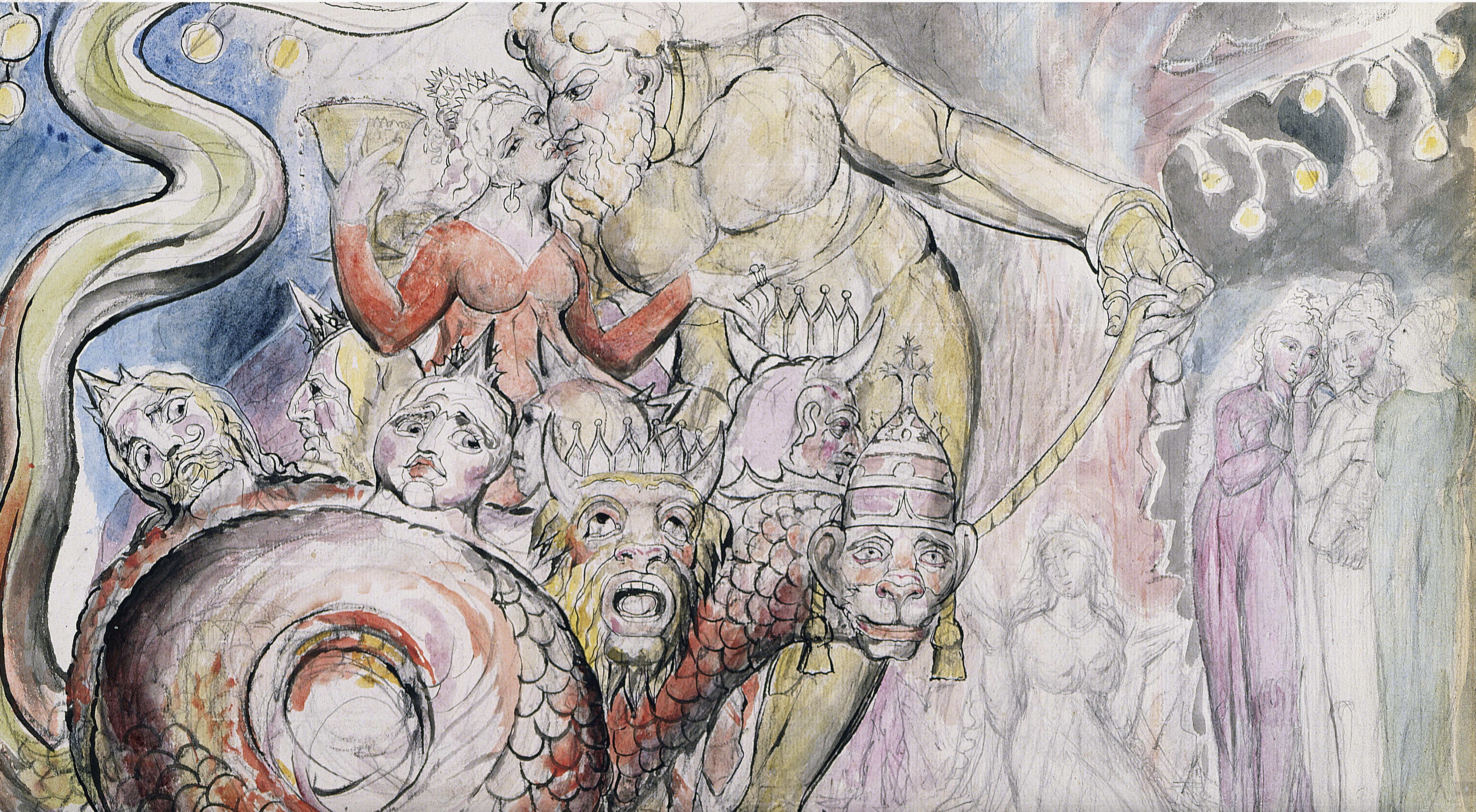
The Whore of Babylon, a key figure or archetype in the process of our estrangement from Being and the processes of judgment and alienation that facilitate it, here shown sitting on the back of the Great Beast. (Image: ‘The Harlot and the Giant’ from Blake’s Illustrations to Dante’s Divine Comedy). As Blake noted in 1798, in contemporary culture and society “The Beast & the Whore rule without controls” (Annotations to Watson). We will see this figure again in Blake’s many Visions of the Last Judgment.
Blake refers to this process, which he also calls “awakening”, as a casting off or a letting go of the Selfhood. The Selfhood is what the Judging program uses to define itself and give it a sense of power (putting itself “up” by judging others and putting them “down”; the vocabulary of up and down, higher and lower, is always a sign of the presence of the Elohim). Awareness is the letting go. As Blake noted, “whenever any Individual Rejects Error & Embraces Truth a Last Judgment passes upon that Individual” (LJ 84).
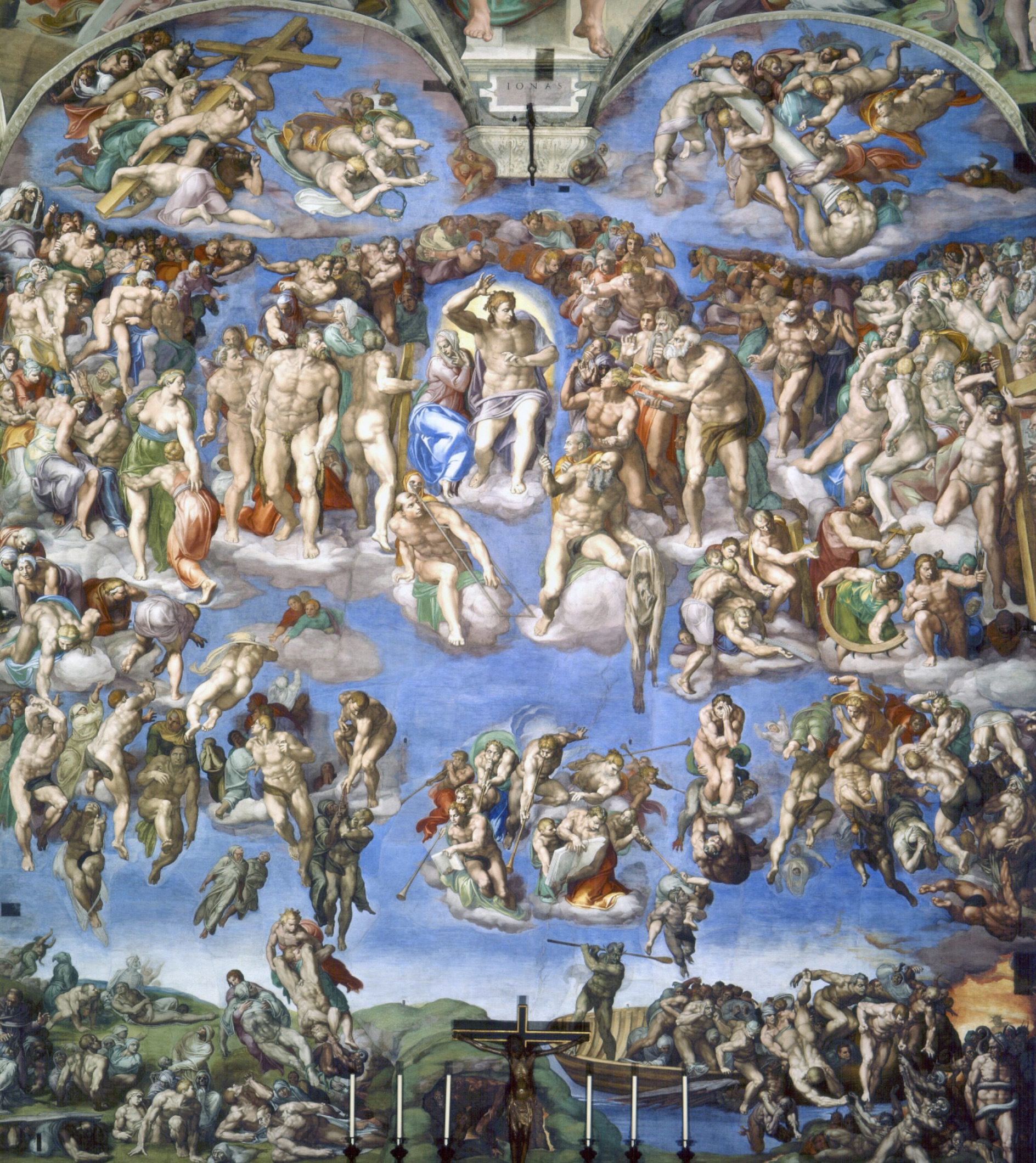
The old, or orthodox, version of The Last Judgment. This version is, both ironically and appropriately, itself the expression of the Judging power that has usurped its position in the human brain. (Image: ‘The Last Judgment’, or Il Giudizio Universale, by Michelangelo in the Sistine Chapel). As Damon notes, such a view of both Judgment and of Jesus (as Judge) “was utterly opposed to Blake’s belief in the character and teaching of Jesus”. As with his admiration for both Dante and Milton, whose work Blake celebrated but whose erroneous belief systems he corrected, Michelangelo’s imaginative power was an inspiration for Blake, but not a wholly uncritical one.
This shows how radically Blake has reinterpreted and indeed cast off the traditional meaning of the “Last Judgment”. Rather than denoting something that might happen at the end of linear time, or as a punishment, Blake suggests that it happens and is happening now (it is the ending of the linear time “program”), and instead of it referring to a process of accusation and condemnation, it is a release from all programs of accusation. Indeed, the end of linear time can never arrive for the left hemisphere, since to be identified with the left brain is to be inside the linear time construct. As Damon has observed:

![]()
 The concept of forgiveness is often understood as operating within traditional ethical and philosophical contexts and frameworks involving issues of moral agency, moral standards, and moral virtue. But there’s another tradition of thinking which sees forgiveness as in a sense a transcendence of, or even a radical challenge to, normal or normative ‘moral’ thinking, with its emphasis (as Martha Nussbaum suggests) on the more ‘transactional’ or ‘performative’ aspects of ethical behaviour and decision-making – for example, calculating the pros and cons of forgiving someone, or weighing up the possible health benefits of forgiveness, which seem to imply and draw on a sort of moral ‘logic’ or ethical equation.
The concept of forgiveness is often understood as operating within traditional ethical and philosophical contexts and frameworks involving issues of moral agency, moral standards, and moral virtue. But there’s another tradition of thinking which sees forgiveness as in a sense a transcendence of, or even a radical challenge to, normal or normative ‘moral’ thinking, with its emphasis (as Martha Nussbaum suggests) on the more ‘transactional’ or ‘performative’ aspects of ethical behaviour and decision-making – for example, calculating the pros and cons of forgiving someone, or weighing up the possible health benefits of forgiveness, which seem to imply and draw on a sort of moral ‘logic’ or ethical equation. 